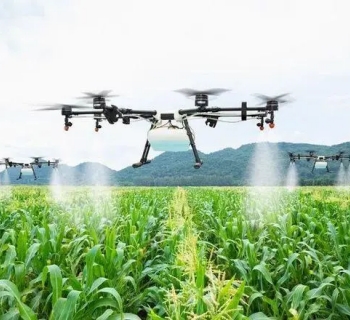1. Efficient compound fertilizer: Potassium dihydrogen phosphate is a high phosphorus and potassium binary compound fertilizer, with a phosphorus and potassium nutrient content of up to 86%, including 52% phosphorus pentoxide and 34% potassium oxide. This makes it an efficient source of nutrients, playing an important role in crop growth and yield improvement.
2. Stable and easily absorbable: Potassium dihydrogen phosphate has stable properties, and its aqueous solution is weakly acidic. It is non-toxic, odorless, nonvolatile, and nondeliquescent, making it easy for plants to recruit and utilize.
3. Function of regulator: In addition to serving as a nutrient source, potassium dihydrogen phosphate also has the function of a regulator, which can stimulate the differentiation of crop flower buds, increase the number of flowers, have strong flower buds, strengthen flowers and preserve fruits, and improve fruit setting rate. In addition, it can effectively promote the growth and development of root systems and improve crop rooting, frost resistance, and stress resistance.
4. Promoting photosynthesis: Potassium dihydrogen phosphate can promote the photosynthesis of crops, promote cell division, delay leaf senescence, increase pollination and fruit setting during flowering, and regulate the distribution of nutrients in plants.
5. Improving quality: Applying potassium dihydrogen phosphate to fruits and vegetables can enhance taste, extend shelf life, and improve transportation quality. Applying it to field crops not only has a good taste but also has high nutritional value.
6. Easy to apply: The application amount of potassium dihydrogen phosphate is small and easy to apply, with low investment and high returns. The usual concentration for foliar spraying is 0.3%. When used as seed fertilizer, the seeds must be soaked in a potassium dihydrogen phosphate solution with a concentration of 0.2%~0.5% for 18-20 hours.
1.Agricultural field: Potassium dihydrogen phosphate is an ideal foliar fertilizer. Its pure product is white crystals, and the solution is acidic, non-toxic, odorless, non-volatile, and non-deliquescent. It has stable properties and is easily absorbed and utilized by plants. During specific growth stages of crops, such as the initial flowering and fruiting stages of eggplant vegetables, foliar spraying with a dilute solution of potassium dihydrogen phosphate can achieve good yield-increasing effects on crops. In addition, it can also be used as a seed fertilizer. Soaking the seeds in a potassium dihydrogen phosphate solution with a concentration of 0.2%~0.5% for 18-20 hours can help improve the seeds' germination rate and growth potential.

Potassium dihydrogen phosphate is an ideal foliar fertilizer
2. Industrial field: In industry, potassium dihydrogen phosphate has various uses, such as being used as a buffer and culture agent, as well as a seasoning agent for the synthesis of sake, a raw material for the production of potassium metaphosphate, and as a culture agent, enhancer, leavening agent, and fermentation assistant for brewing yeast.

Company Profile
NANOTRUN(www.rboschco.com) is a trusted global chemical material supplier & manufacturer with over 12-year-experience in providing super high-quality chemicals and nanomaterials, including boride powder, nitride powder, graphite powder, sulfide powder, 3D printing powder, etc.
The company has a professional technical department and Quality Supervision Department, a well-equipped laboratory, and equipped with advanced testing equipment and after-sales customer service center.
If you are looking for high-quality MAP-K Potassiam Monoalkyl Phosphate , please feel free to contact us or click on the needed products to send an inquiry.
Payment Term
L/C, T/T, Western Union, Paypal, Credit Card etc.

Shipment Term
By sea, by air, by express, as customers request.
Storage Conditions:
1. Moisture proof and sealing: Due to the moisture absorption of potassium dihydrogen phosphate, it should be stored in a dry, draught, and cool environment, avoiding direct sunlight and high temperature and humidity. The storage temperature must generally be below 25 ℃, and the relative humidity should not be beyond 60%. Storage containers should be sealed to prevent them from absorbing moisture from the air and reacting with other substances in the air.
2. Avoid contact with other chemicals: Potassium dihydrogen phosphate may react with certain chemicals (such as ammonia chemical reagents, alkali chemical reagents, etc.), so it should be avoided from being placed together with other chemicals.
3. Clear labeling: The container for storing potassium dihydrogen phosphate must indicate its name, properties, hazards, and other information to avoid storage confusion or misuse.
4. Control storage time: It is recommended that the storage period of potassium dihydrogen phosphate should not exceed 24 months. After exceeding this deadline, it is necessary to recheck whether its quality still meets the requirements for use.
Q1
What are the phosphorus and potassium contents of MAP-K potassium dihydrogen phosphate as an efficient phosphorus-potassium compound fertilizer?
Re:MAP-K potassium dihydrogen phosphate is an efficient phosphorus potassium compound fertilizer with a phosphorus content of 22.8% and a potassium content of 28.6%. These component ratios make them an indispensable source of nutrients for crop growth. Phosphorus is an important component of plant cell walls and nuclei, which helps promote root growth and enhance plant stress resistance. Conversely, potassium participates in plants' photosynthesis and respiration and significantly impacts their growth and yield. The phosphorus and potassium elements in MAP-K potassium dihydrogen phosphate exist in a form that is easily absorbed by plants, which can quickly supplement nutrient deficiencies in the soil and promote the healthy growth of crops.
Q2
Why do we usually choose a concentration of 0.3% when spraying potassium dihydrogen phosphate on leaves?
Re:When foliar spraying potassium dihydrogen phosphate, a concentration of 0.3% is usually chosen because it can provide the phosphorus and potassium elements required by the crop while avoiding the risk of leaf burns caused by high concentrations and the inability to achieve ideal results due to low concentrations. The concentration of 0.3% has been verified through scientific research and practical application. It can ensure that crops fully absorb nutrients without causing damage to leaves, thus maximizing the foliar fertilization effect of potassium dihydrogen phosphate.
Q3
How does the deliquescence of MAP-K potassium dihydrogen phosphate affect its storage and transportation?
Re:The deliquescence of MAP-K potassium dihydrogen phosphate means it is prone to absorbing moisture from the air and causing clumping or dissolution, posing certain storage and transportation challenges. To ensure the quality and stability of MAP-K potassium dihydrogen phosphate, it is necessary to store it in a ventilated, dry, cool, and clean warehouse and take sealed and moisture-proof measures to prevent it from absorbing moisture from the air and clumping. During transportation, it is also necessary to avoid rain and direct sunlight to prevent the deliquescence and deterioration of potassium dihydrogen phosphate. Therefore, special attention should be paid to moisture-proof and sun protection measures for storing and transporting MAP-K potassium dihydrogen phosphate to ensure its quality and stability.
Q4
How environmentally friendly and safe is MAP-K potassium dihydrogen phosphate?
Re:MAP-K potassium dihydrogen phosphate, as an inorganic compound, has relatively high environmental protection and safety. It does not generate toxic and harmful substances during production and use, and its impact on the environment and human health is relatively small. Meanwhile, MAP-K potassium dihydrogen phosphate is easy to degrade and decompose and will not cause long-term environmental pollution. However, attention should still be paid to fertilizing according to the recommended dosage and method during use to avoid potential negative impacts on the environment and crops caused by excessive or improper use.
Q5
What are the unique advantages or characteristics of MAP-K potassium dihydrogen phosphate compared to other phosphorus and potassium fertilizers?
Re:MAP-K potassium dihydrogen phosphate has unique advantages and characteristics compared to other phosphorus and potassium fertilizers. Firstly, it contains a high proportion of phosphorus and potassium elements, which can quickly supplement nutrient deficiencies in the soil and promote the healthy growth of crops. Secondly, plants easily absorb and utilize MAP-K potassium dihydrogen phosphate, which can quickly exert its effects and improve crop yield and quality. In addition, it also has good stability and safety, with minimal influence on the environment and human health. Finally, MAP-K potassium dihydrogen phosphate also has wide applicability and can be used for foliar spraying and soil fertilizing various crops, providing convenience and benefits for agricultural production. These unique advantages and characteristics make MAP-K potassium dihydrogen phosphate competitive in the phosphorus and potassium fertilizer market and favored by many farmers.
MAP-K Potassiam Monoalkyl Phosphate Properties | |
| Other Names | N/A |
| CAS No. | 39322-78-6 |
| Compound Formula | C12H25OPO3K2 |
| Molecular Weight | N/A |
| Appearance | NA |
| Melting Point | N/A |
| Boiling Point | N/A |
| Density | N/A |
| Solubility in H2O | N/A |
| Exact Mass | N/A |
MAP-K Potassiam Monoalkyl Phosphate Health & Safety Information | |
| Signal Word | N/A |
| Hazard Statements | N/A |
| Hazard Codes | N/A |
| Risk Codes | N/A |
| Safety Statements | N/A |
| Transport Information | N/A |




